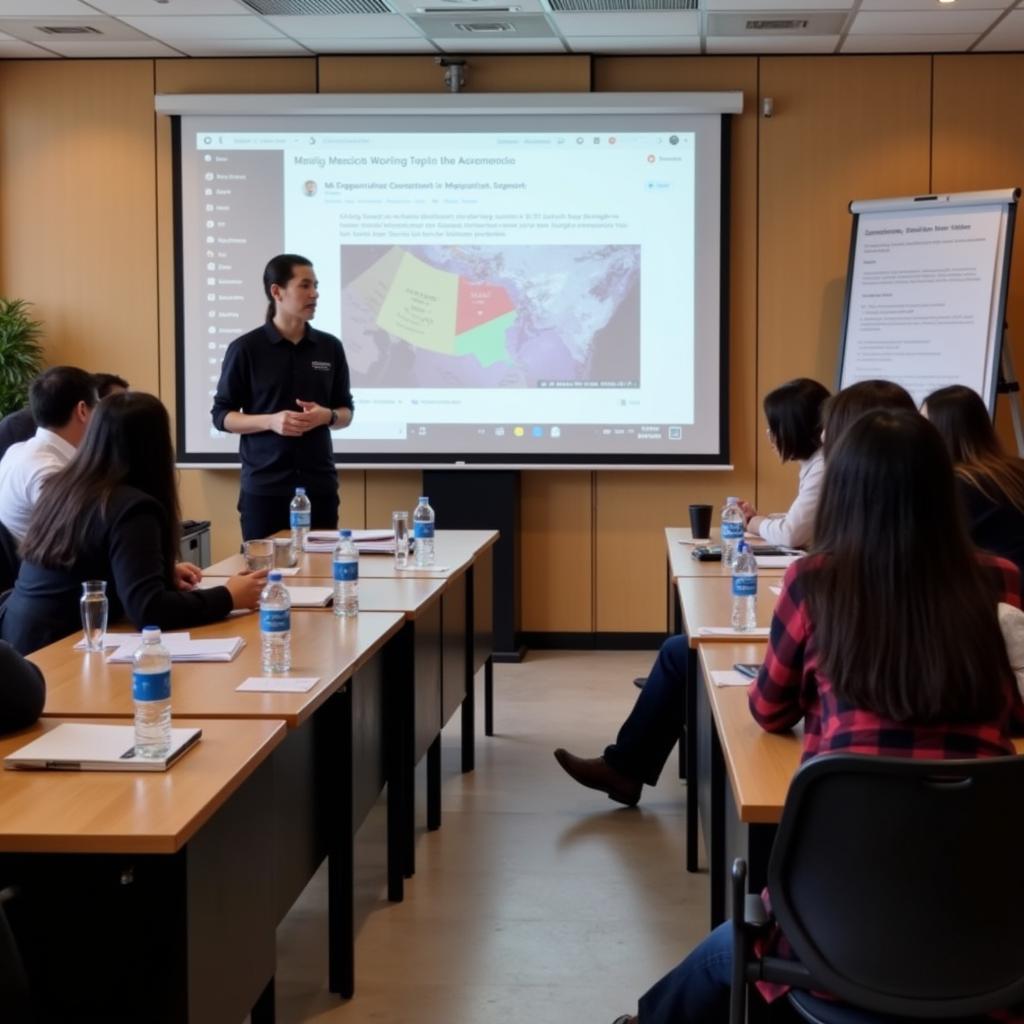The Association of Southeast Asian Nations (ASEAN) stands as a testament to regional cooperation, fostering economic growth and stability amidst a diverse geopolitical landscape. But what exactly fuels this dynamic bloc? The answer lies in understanding the intricacies of ASE – ASEAN economic integration.
Deciphering ASE: The Cornerstone of ASEAN’s Success
ASE strives to create a single market and production base, promoting the free flow of goods, services, investment, and skilled labor within Southeast Asia. This integration aims to enhance ASEAN’s competitiveness, attract foreign direct investment, and improve the lives of its 650 million inhabitants.
The Pillars of ASE: Building a Unified Economic Space
ASE rests on four fundamental pillars, each crucial for fostering economic integration:
- ASEAN Free Trade Area (AFTA): Established in 1992, AFTA eliminates tariffs and non-tariff barriers on most goods traded within ASEAN. This free trade zone has significantly boosted intra-ASEAN trade, making it one of the world’s most integrated regions.
- ASEAN Investment Area (AIA): The AIA seeks to make ASEAN a more attractive and competitive investment destination. It provides a framework for liberalizing investment regulations, promoting transparency, and facilitating cross-border investments within the region.
- ASEAN Framework Agreement on Services (AFAS): Recognizing the growing importance of the services sector, AFAS aims to liberalize trade in services within ASEAN. It facilitates the movement of professionals and promotes cooperation in key sectors like finance, tourism, and logistics.
- ASEAN Economic Community (AEC) Blueprint 2025: The AEC Blueprint lays out a strategic roadmap for achieving a highly integrated and cohesive ASEAN economy by 2025. It focuses on areas like connectivity, digital integration, and fostering innovation to boost regional competitiveness.
ASE: A Catalyst for Growth and Prosperity
ASE has yielded remarkable results, transforming ASEAN into a global economic powerhouse. Some key benefits include:
- Rapid Economic Growth: ASEAN has consistently outpaced global growth rates, with its combined GDP exceeding US$3 trillion.
- Increased Trade and Investment: Intra-ASEAN trade has surged, and the region has attracted substantial foreign direct investment, creating jobs and boosting technological advancement.
- Improved Living Standards: ASE has contributed to poverty reduction and improved living standards for millions across Southeast Asia.
“ASEAN’s commitment to economic integration has been instrumental in driving the region’s remarkable growth story. By dismantling barriers to trade and investment, ASE has created a more prosperous and interconnected Southeast Asia.” – Dr. Tran Van Nam, Economist and ASEAN expert.
The Future of ASE: Navigating Challenges and Embracing Opportunities
While ASE has made significant strides, challenges remain. These include addressing development gaps between member states, navigating global economic uncertainties, and adapting to the rise of digital technologies.
The future of ASE hinges on its ability to address these challenges and harness emerging opportunities. Key priorities include:
- Deepening Integration: ASEAN must strive for deeper economic integration, going beyond tariff reductions to harmonize regulations, facilitate cross-border trade, and promote seamless connectivity.
- Embracing Digitalization: The digital economy presents immense opportunities for ASEAN. Embracing digital technologies, fostering innovation, and bridging the digital divide will be crucial for unlocking future growth.
- Promoting Sustainability: Integrating sustainability principles into economic policies and promoting responsible business practices will be essential for ensuring inclusive and environmentally sound growth.
ASE: A Beacon of Regional Cooperation
ASE stands as a shining example of successful regional integration. By breaking down barriers, fostering cooperation, and embracing innovation, ASE has the potential to propel Southeast Asia towards greater prosperity and solidify its position as a driving force in the global economy.
FAQs
- What is the main goal of ASE? The main goal of ASE is to create a single market and production base in Southeast Asia, promoting free flow of goods, services, investment, and skilled labor.
- How does ASE benefit businesses? ASE benefits businesses by providing a larger market, reducing trade barriers, and offering greater access to skilled labor and resources.
- What are some of the challenges facing ASE? Some challenges facing ASE include addressing development gaps between member states, navigating global economic uncertainties, and adapting to technological advancements.
For any inquiries or assistance, please don’t hesitate to contact us. Our dedicated team is available 24/7 to provide support and guidance. You can reach us at:
Phone Number: 0369020373
Email: [email protected]
Alternatively, you can visit us at our office located at:
Thon Ngoc Lien, Hiep Hoa, Bac Giang, Vietnam.


